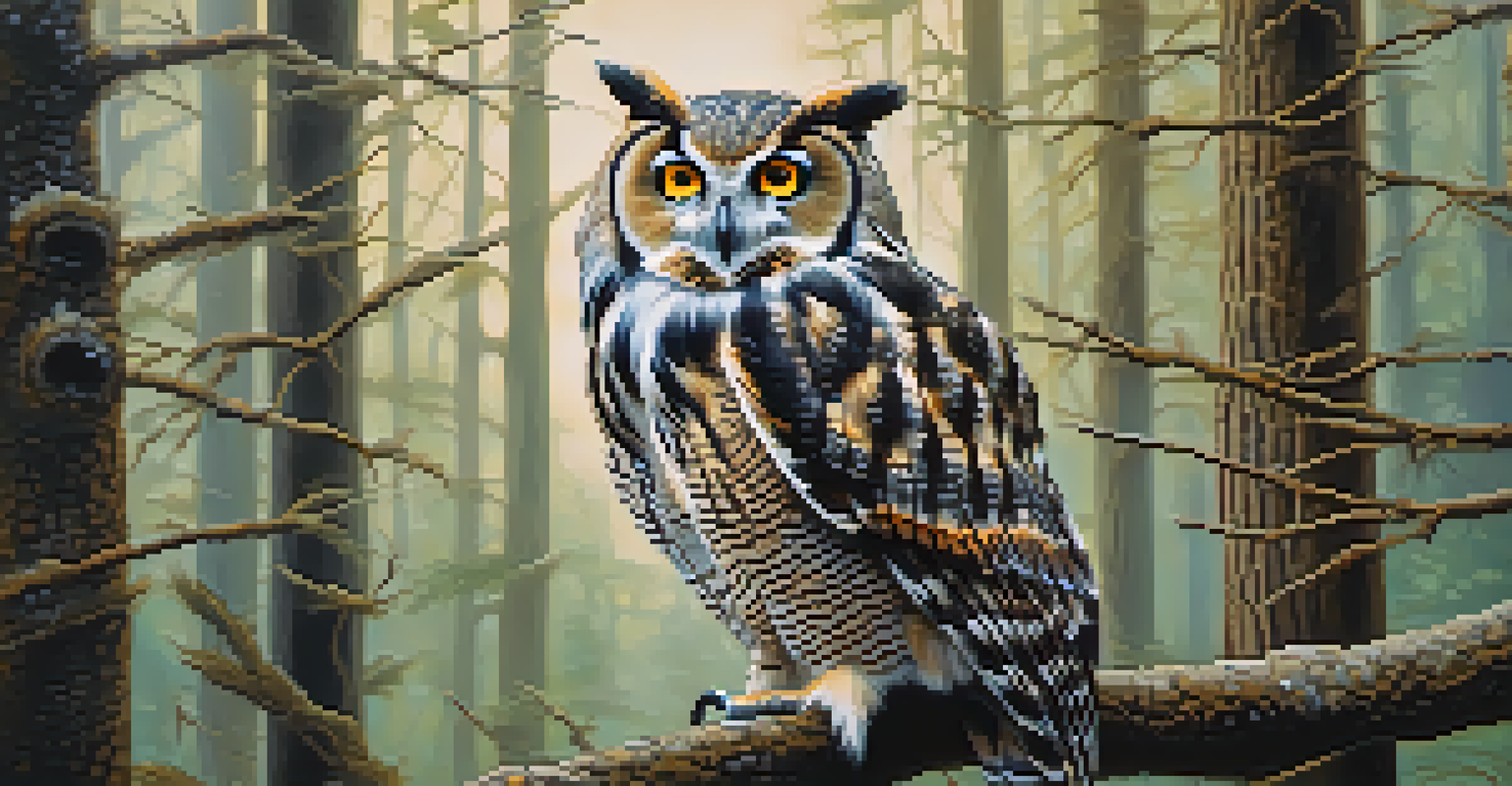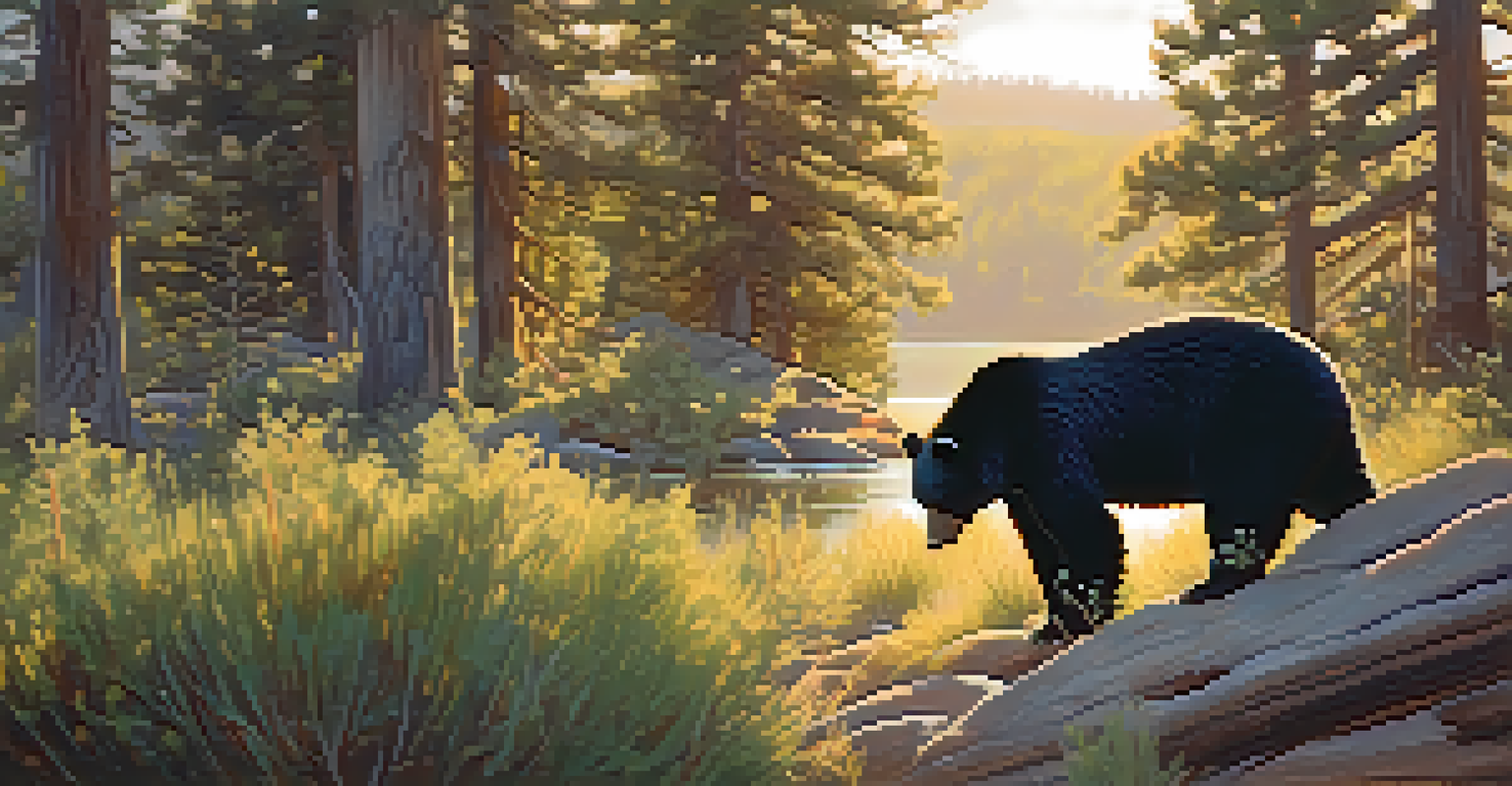Photography Tips for Capturing Big Bear's Wildlife

Understanding Big Bear's Wildlife Habitats
Big Bear Lake is home to diverse wildlife, including bears, deer, and various bird species. Understanding their habitats can greatly enhance your chances of a successful photo. For instance, bears often roam near food sources like berry bushes and streams during summer.
In every walk with nature one receives far more than he seeks.
Exploring different environments, such as forests and meadows, can yield unique opportunities. Each habitat offers a glimpse into the behaviors and lifestyles of the animals that inhabit them. Knowing where to look is half the battle in wildlife photography.
Additionally, being aware of seasonal changes can inform your planning. Animals may be more active during certain times of the year, so researching migration patterns or breeding seasons can lead to stunning shots.
Timing Your Shoots for Best Light
Lighting plays a crucial role in photography, especially in outdoor settings like Big Bear. The golden hours—early morning and late afternoon—provide soft, warm light that enhances colors and details in your photos. Animals are often more active during these times, making it a win-win for photographers.

Avoid the harsh midday sun, which can cast unflattering shadows and wash out colors. Instead, plan your outings around the times when the light is most favorable. This not only improves the quality of your images but also keeps you engaged with the environment.
Know Wildlife Habitats for Success
Understanding the habitats of wildlife in Big Bear enhances your chances of capturing stunning photographs.
In addition to natural light, consider weather conditions. Overcast days can provide even lighting, reducing shadows and allowing for crisp details, which can be particularly beneficial for capturing the intricate features of wildlife.
Using the Right Equipment for Wildlife Photography
While you don’t need the most expensive gear to capture stunning wildlife photos, certain equipment can make a significant difference. A good DSLR or mirrorless camera with a telephoto lens allows you to shoot from a distance without disturbing the animals. This is particularly important for skittish species.
Photography is the story I fail to put into words.
Tripods or monopods can also be beneficial for stabilizing your camera, especially in low light conditions. They allow for sharper images and reduce the risk of camera shake. Don’t forget extra batteries and memory cards; you never know when you might encounter a photo opportunity!
Lastly, consider using a camouflaged lens cover or clothing to blend into the environment. This helps you remain inconspicuous, increasing your chances of capturing natural behaviors without alerting the animals.
Practicing Patience and Observation
Wildlife photography often requires a good dose of patience. Animals don’t always perform on cue, so it’s essential to observe their behavior and be ready for spontaneous moments. This may mean sitting quietly for extended periods, waiting for the perfect shot.
Take time to learn about the specific animals you wish to photograph. Understanding their habits, feeding times, and social interactions allows you to anticipate their movements. This knowledge can help you position yourself for the best possible angle.
Timing is Key for Great Light
Shooting during the golden hours not only provides optimal lighting but also aligns with animal activity for better photography.
Remember, the goal is to capture authentic moments, so avoid rushing the process. Sometimes the best shots come when you least expect them, so remain attentive and keep your camera ready.
Staying Safe in Big Bear's Wilderness
Safety should always be a priority when exploring wildlife areas. Be aware of your surroundings and keep a respectful distance from animals, especially larger species like bears. Using a zoom lens allows you to maintain that safe space while still capturing great shots.
Familiarize yourself with the local wildlife safety guidelines. This includes understanding bear behavior and knowing how to react if you encounter one. Carry bear spray as a precaution, and always inform someone about your plans before heading out.
Additionally, be cautious of the terrain. Hiking in unfamiliar areas can lead to slips or falls, so wear appropriate footwear and stay on established trails whenever possible. Your safety is essential for a successful photography experience.
Composing Your Wildlife Shots
Composition plays a vital role in creating engaging wildlife photos. Use the rule of thirds, which suggests dividing your frame into three equal parts and positioning your subject along those lines or at their intersections. This technique often leads to more balanced and dynamic images.
Incorporating elements of the environment can add depth to your photos. For example, including trees, water, or other wildlife can create a more immersive scene, telling a story about the animal’s habitat. Experimenting with different angles and perspectives can also yield unique results.
Patience and Safety Are Essential
Practicing patience and prioritizing safety in wildlife photography ensures both a rewarding experience and a successful shoot.
Don’t forget to focus on the eyes of your subject; they often convey emotion and draw the viewer in. A sharp focus on the eyes combined with a soft background can create striking portraits of the animals you encounter.
Editing Your Wildlife Photos for Impact
Post-processing is an essential step in wildlife photography that can elevate your images. Basic adjustments like cropping, brightening, and color correction can enhance the overall quality of your photos. Software like Adobe Lightroom or Photoshop offers powerful tools for editing.
Consider sharpening your images to highlight details, especially in fur or feathers. However, be cautious not to overdo it; maintaining a natural look is key. Experiment with filters or presets that align with the mood you want to convey.

Lastly, always save your original files. You may want to revisit them in the future as your editing skills improve. Keeping a library of your raw images allows for endless creative possibilities down the line.